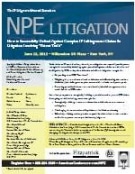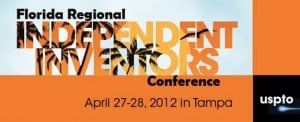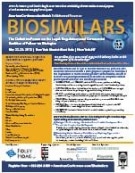The day after the Supreme Court issued its decision in Mayo v. Prometheus, the USPTO issued a letter to the Patent Examining Corps that provides preliminary guidance to examiners and promises that more detailed guidance is forthcoming.
MEMORANDUM
DATE: March 21, 2012
TO: Patent Examining Corps
FROM: Andrew H. Hirshfeld, Associate Commissioner For Patent Examination Policy
SUBJECT: Supreme Court Decision in Mayo Collaborative Services v. Prometheus Laboratories, Inc.
Yesterday, in a unanimous decision, the Supreme Court held that the claims in Mayo Collaborative Services v. Prometheus Laboratories, Inc. (Mayo) effectively claim a law of nature and are not patent-eligible under 35 U.S.C. § 101. The purpose of this memorandum is to provide preliminary guidance to the Patent Examining Corps. Additional guidance on patent subject matter eligibility under 35 U.S.C. § 101 will be issued soon.
Claims to Law of Nature Itself Are Not Patent-Eligible
The claims in Mayo are directed to a process of medical treatment. Claim 1 is representative:
A method of optimizing therapeutic efficacy for treatment of an immune-mediated gastrointestinal disorder, comprising:
(a) administering a drug providing 6-tmoguanine to a subject having said immunemediated gastrointestinal disorder; and
(b) determining the level of 6-tmoguanine in said subject having said immune-mediated gastrointestinal disorder,
wherein the level of 6-thioguanine less than about 230 pmol per 8×10 red blood cells indicates a need to increase the amount of said drug subsequently administered to said subject and
wherein the level of 6-thioguanine greater than about 400 pmol per 8x 10 red blood cells indicates a need to decrease the amount of said drug subsequently administered to said subject.
The Supreme Court found that because the laws of nature recited by the patent claims – the relationships between concentrations of certain metabolites in the blood and the likelihood that a thiopurine drug dosage will prove ineffective or cause harm – are not themselves patenteligible, the claimed processes are likewise not patent-eligible unless they have additional features that provide practical assurance that the processes are genuine applications of those laws rather than drafting efforts designed to monopolize the correlations. The additional steps in the claimed processes here are not themselves natural laws, but neither are they sufficient to transform the nature of the claims.
In this case, the claims inform a relevant audience about certain laws of nature. Any additional steps consist of well-understood, routine, conventional activity already engaged in by the scientific community. Those steps, when viewed as a whole, add nothing significant beyond the sum of their parts taken separately. The Court has made clear that to transform an unpatentable law of nature into a patent-eligible application of such a law, one must do more than simply state the law of nature while adding the words “apply it.” Essentially, appending conventional steps, specified at a high level of generality, to laws of nature, natural phenomena, and abstract ideas cannot make those laws, phenomena, and ideas patent-eligible.
The decision rested upon an examination of the particular claims in light of the Court’s precedents, specifically Bilski, Flook and Diehr. The Court repeated the long-standing exceptions (laws of nature, natural phenomena, and abstract ideas) to categories of patent eligibility defined in 35 U.S.C. § 101. In conducting the analysis, the Court addressed the “machine~or-transformation” test explained in Bilski with a reminder that the test is an “important and useful clue” to patentability but that it does not trump the “law of nature” exclusion. A claim that recites a law of nature or natural correlation, with additional steps that involve well-understood, routine, conventional activity previously engaged in by researchers in the field is not patent-eligible, regardless of whether the steps result in a transformation. On the other hand, reaching back to Neilson, the Court pointed to an eligible process that included not only a law of nature (hot air promotes ignition) but also several unconventional steps (involving a blast furnace) that confined the claims to a particular, useful application of the principle.
Preliminary Guidance on Examination Procedure
As part of a complete analysis under 35 U.S.c. § 101, examiners should continue to examine patent applications for compliance with section 101 using the existing Interim Bilski Guidance issued July 27, 20 I0, factoring in the additional considerations below. The Interim Bilski Guidance directs examiners to weigh factors in favor of and against eligibility and reminds examiners that, while the machine-or-transformation test is an investigative tool, it is not the sole or a determinative test for deciding whether an invention is patent-eligible,
Examiners must continue to ensure that claims, particularly process claims, are not directed to an exception to eligibility such that the claim amounts to a monopoly on the law of nature, natural phenomenon, or abstract idea itself. In addition, to be patent-eligible, a claim that includes an exception should include other elements or combination of elements such that, in practice, the claimed product or process amounts to significantly more than a law of nature, a natural phenomenon, or an abstract idea with conventional steps specified at a high level of generality appended thereto.
If a claim is effectively directed to the exception itself (a law of nature, a natural phenomenon, or an abstract idea) and therefore does not meet the eligibility requirements, the examiner should reject the claim under section 101 as being directed to non-statutory subject matter. If a claim is rejected under section 101 on the basis that it is drawn to an exception, the applicant then has the opportunity to explain why the claim is not drawn solely to the exception and point to limitations in the claim that apply the law of nature, natural phenomena or abstract idea.
The USPTO is continuing to study the decision in Mayo and the body of case law that has evolved since Bilski and is developing further detailed guidance on patent subject matter eligibility under 35 U.S.c. § 101.



